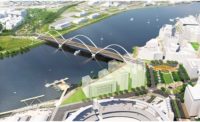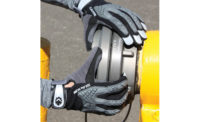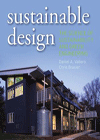Boulder’s Casey Middle School employs a North Face backpack of energy-saving tools that make it one of the most sustainable new schools in the state.
Those include geothermal and solar power, a zero-waste cafeteria, ample use of recycled materials and a salvaged partial fa�ade from the original school that gives the new one character and a connection to its historical roots.
Casey’s advisory team of designers, Boulder Valley School District officials, parents and community members began meeting in 2007 to consider options for upgrading the 1924 school. Influenced by the site’s expansive clay soils, which had caused walls to crack and floors to heave significantly—not an uncommon phenomenon along the Front Range—the team opted to build a new school.
Other pivotal issues included the unsuitability of the old school for modern teaching methods and curricula. The site’s urban location and small size—8.4 acres as opposed to a more typical 16—limited design options and demanded creative problem solving.
Construction of the roughly 107,000-sq-ft school began in January 2009 and finished this summer. The school opened for fall term with a full complement of 600 students plus staff.
Changes in project scope requested by BVSD—specifically the addition of 150 lockers to the original 450 because of unexpectedly high enrollment, upgraded paving from asphalt to concrete and artificial turf for the athletic field—pushed construction costs to approximately $26.4 million, slightly higher than the $24.7 million originally projected. Total project cost, including fees and permits, is expected to be $31 million. The new school has a lock on LEED-Gold certification and a chance for Platinum.
Saunders Construction of Centennial, Colo., was the general contractor.
Saving the Walls
“The clean, modern design was a natural outgrowth of the desire to preserve the historic collegiate-gothic walls on the front and south sides,” says project architect Derek Young of RB+B Architects Inc. of Fort Collins. “We didn’t want to detract from their beauty.”
At a cost of $550,000 and six weeks additional build time, the walls were braced from outside before the roof and second floor were “surgically” cut away. Holes were bored and micropiles installed to reinforce the original spread footings.
“Setting the foundation on concrete caissons mitigated the effects of swelling clays and sloping bedrock,” Young says. “The project has a bit of everything in terms of structure. Precast concrete T’s selected for the main floor accelerated our construction schedule, enhanced fireproofing and eliminated the need for sprinklers on the lower level.
“The superstructure is primarily steel and poured concrete decking (on the second floor) with conventional stud and ground-faced (smooth exposed aggregate) CMU-block walls. Stud and concrete-block walls are veneered with sheet metal and brick.”









